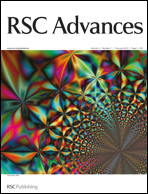Alzheimer's disease (AD) is the most common chronic, progressive neurodegenerative disease, which affects an increasing number of elderly patients. So far, there is no cure for the disease. Early diagnosis to predict dementia outcome is of great importance. Biomarkers, as physiological indicators of AD, hold great promise for clinical diagnosis and drug discovery. Sensitive and selective methods that are amenable to the detection of biomarkers are much preferred. Surface plasmon resonance (SPR) is a sensitive optical technique capable of measuring analyte concentrations as well as kinetics of biomolecular interactions. It exhibits a variety of fascinating properties, such as high sensitivity, label-free and real-time analysis, and low sample consumption. In this review, we address the recent development on sensitive detection of a series of biomarkers for AD using SPR. Furthermore, amyloid-β (Aβ) fibril formation and interaction monitored by SPR have been documented. The challenges and perspectives inherent in the detection of the biomarkers are also highlighted.

You have access to this article
 Please wait while we load your content...
Something went wrong. Try again?
Please wait while we load your content...
Something went wrong. Try again?


 Please wait while we load your content...
Please wait while we load your content...